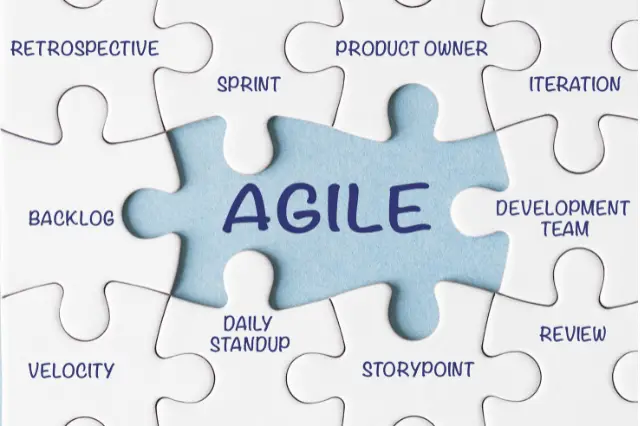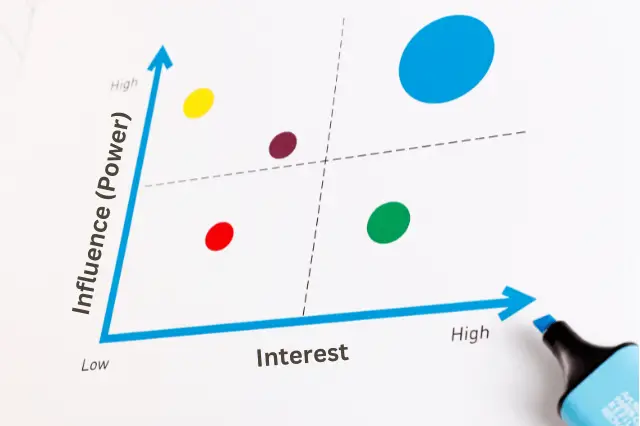Last Updated on August 18, 2024 by andrewshih
Have you ever wondered how project managers estimate the cost and duration of a project when detailed information is not yet available?
Analogous estimating is a technique that leverages historical data to predict future project costs and durations. This comprehensive guide covers its purpose, usage, advantages, disadvantages, steps, examples, and more.
- What is Analogous Estimating?
- Purpose of Analogous Estimating
- When to Use Analogous Estimating
- Analogous Estimating in Project Management
- Advantages and Disadvantages of Analogous Estimating
- Steps in Analogous Estimating
- Detailed Analogous Estimating Example: IT Project
- Best Practices for Analogous Estimating
- Mistakes to Avoid
- Analogous Estimating vs. Parametric Estimating
- Analogous Estimating vs. Bottom-Up Estimating
- Tools for Analogous Estimating
- Analogous Estimating in Different Industries
- Conclusion
- FAQ
What is Analogous Estimating?
Analogous estimating involves using the metrics from similar past projects to estimate a current project’s cost and duration. This technique relies heavily on expert judgment and historical data, making it a quick and cost-effective method for generating rough estimates.
In this method, project managers draw parallels between the current project and previous ones, adjusting for any differences to ensure accuracy.
For example, suppose a previous project similar in scope and complexity took six months and cost $500,000. In that case, a new project might be estimated to take a comparable amount of time and money, with adjustments made for inflation, resource availability, and other factors.
Purpose of Analogous Estimating
The primary purpose of analogous estimating is to provide a rough estimate when detailed project information is unavailable. It is particularly useful in the early stages of a project when stakeholders need preliminary budget and timeline estimates to make informed decisions.
Key purposes include:
- Early Budgeting: Provides a ballpark figure for budgeting purposes.
- Feasibility Studies: Helps determine if a project is worth pursuing based on initial estimates.
- Baseline Setting: Establishes a preliminary baseline for project planning and scheduling.
When to Use Analogous Estimating
Analogous estimating is best used in situations where:
- Detailed Information is Scarce: In the initial phases of a project when detailed data is not yet available.
- Quick Estimates are Needed: When time constraints demand fast decision-making.
- Historical Data is Available: When reliable data from similar past projects can be used as a reference.
Analogous Estimating in Project Management
Analogous estimating plays a crucial role in project management by providing quick and cost-effective estimates.
This method is particularly valuable in the early stages of project planning, where detailed information is not yet available. It helps project managers set realistic expectations and make informed decisions about project feasibility and budgeting.
Advantages and Disadvantages of Analogous Estimating
Advantages
-
Speed: Provides quick estimates, facilitating faster decision-making.
-
Cost-Effective: Requires fewer resources and less time compared to detailed estimating methods.
-
Simplicity: Easy to understand and implement, especially in early project phases.
Disadvantages
-
Accuracy: Less accurate than detailed methods, as it relies on broad comparisons and assumptions.
-
Subjectivity: Depends heavily on the judgment and experience of the project manager.
-
Applicability: Limited to projects that are similar in scope and context.
Steps in Analogous Estimating
- Identify Past Projects: Select previous projects that are similar in scope, complexity, and context.
- Collect Data: Gather metrics such as cost, duration, resource usage, and outcomes from these past projects.
- Adjust for Differences: Modify estimates to account for any differences between past projects and the current one.
- Validate with Experts: Consult with experienced project managers or subject matter experts to ensure the estimates are realistic.
- Document Assumptions: Clearly record the assumptions and adjustments made during the estimating process for future reference.
Detailed Analogous Estimating Example: IT Project
Consider an IT company planning to develop a new software application. The project manager uses analogous estimating based on a similar project completed last year.
Here’s a step-by-step illustration:
- Identify Past Project: Last year’s software development project.
- Collect Data: Cost ($500,000), duration (9 months), key resources used (developers, testers, project managers).
- Adjust for Differences: The new project will incorporate more advanced features and require integration with additional third-party services. The manager adjusts the cost estimate to $600,000 and the duration to 11 months.
- Validate with Experts: The manager consults with senior developers and project managers who confirm that the adjustments are reasonable given the project’s increased complexity.
- Document Assumptions: Records the basis for adjustments, such as additional features and integration requirements.
By following these steps, the project manager provides stakeholders with a preliminary estimate that helps in budget approval and project planning.
Best Practices for Analogous Estimating
-
Ensure Data Quality: Use reliable and well-documented historical data to base your estimates.
-
Consider Project Differences: Always adjust for any significant differences between past projects and the current one.
-
Use Multiple Data Points: Where possible, use data from multiple past projects to improve estimate accuracy.
-
Validate with Experts: Regularly consult with experienced professionals to verify the reasonableness of your estimates.
-
Document Everything: Keep detailed records of the assumptions, adjustments, and data sources used in your estimates.
Mistakes to Avoid
-
Over-Reliance on Past Data: Ensure significant differences between projects are accounted for.
-
Ignoring Expert Judgment: Always validate estimates with experienced professionals.
-
Lack of Documentation: Clearly record all assumptions and adjustments to maintain transparency.
Analogous Estimating vs. Parametric Estimating
| Feature | Analogous Estimating | Parametric Estimating |
|---|---|---|
| Approach | Uses broad comparisons and expert judgment from past projects | Involves statistical relationships between variables |
| Accuracy | Less accurate due to reliance on broad comparisons | More precise due to use of statistical data |
| Speed | Quicker as it requires less detailed information | Slower as it requires detailed data analysis |
| Applicability | Best for early project phases or when detailed data is unavailable | Best for projects with available detailed and quantitative data |
| Effort | Requires less effort and fewer resources | Requires more effort and resources due to detailed analysis |
Analogous Estimating vs. Bottom-Up Estimating
| Feature | Analogous Estimating | Bottom-Up Estimating |
|---|---|---|
| Approach | Uses historical data and expert judgment from past projects | Breaks down project into smaller components and estimates each part individually |
| Accuracy | Less accurate due to reliance on broad comparisons | More accurate due to detailed analysis of project components |
| Speed | Quicker as it requires less detailed information | Slower as it requires detailed breakdown and analysis |
| Applicability | Best for early project phases or when detailed data is unavailable | Best for later project phases when detailed information is available |
| Effort | Requires less effort and fewer resources | Requires more effort and resources due to detailed breakdown and aggregation |
Tools for Analogous Estimating
- Project Management Software: Tools like MS Project, Primavera, or dedicated estimating software can store and analyze historical data.
- Spreadsheets: Simple yet effective for manual estimates and adjustments.
Analogous Estimating in Different Industries
Here are 3 sample examples of using analogous estimating in the construction, manufacturing, and healthcare industries.
Construction Industry:
- Scenario: Estimating the cost and duration of building a new residential complex.
- Example: Using data from a previous residential project, adjusting for inflation, location differences, and new building codes.
Manufacturing Industry:
- Scenario: Estimating the production cost of a new product line.
- Example: Using data from a similar product launch, adjusting for material costs, production techniques, and scale of production.
Healthcare Industry:
- Scenario: Estimating the cost of implementing a new healthcare IT system.
- Example: Using data from a similar IT implementation in another hospital, adjusting for system upgrades and training requirements.
Conclusion
Analogous estimating is an essential technique in project management, offering a quick and efficient way to generate rough estimates based on historical data.
While it has limitations in terms of accuracy and subjectivity, it remains a valuable tool for early-stage project planning and decision-making. By understanding its principles, best practices, and applications across different industries, project managers can effectively use analogous estimating to guide their projects to success.
FAQ
Can analogous estimating be used in agile project management?
Yes, analogous estimating can be used in agile environments to provide rough estimates for sprints or iterations, helping to plan resources and timelines effectively.
How do you ensure the reliability of historical data in analogous estimating?
Reliability is ensured by using well-documented, accurate data from past projects and validating assumptions with experienced professionals.
What industries benefit the most from analogous estimating?
Industries with repetitive or similar projects, such as construction, manufacturing, and software development, benefit the most from analogous estimating.
How do you integrate analogous estimating with other estimation techniques?
Project managers often combine analogous estimating with other techniques, like parametric or bottom-up estimating, to cross-verify estimates and improve accuracy.
What role do expert judgments play in analogous estimating?
Expert judgments are crucial as they provide insights and adjustments based on past experiences, ensuring the estimates are realistic and contextually accurate.
How can technology enhance the process of analogous estimating?
Technology, such as project management software and databases, can store historical data, streamline comparisons, and facilitate adjustments, making the process more efficient and accurate.
Is analogous estimating suitable for all project types?
No, it is best suited for projects with similarities to past projects. Unique, unprecedented projects might require more detailed methods like bottom-up estimating.
How do you document the estimating process in analogous estimating?
Documenting includes recording the historical data used, the adjustments made, the rationale behind these adjustments, and any expert consultations, ensuring transparency and traceability.
Can analogous estimating be used for both cost and time estimates?
Yes, analogous estimating can be applied to both cost and time estimates, providing a comprehensive overview of the project’s resource needs.



